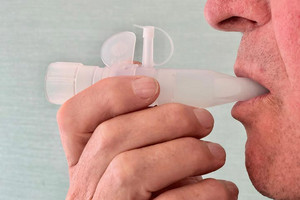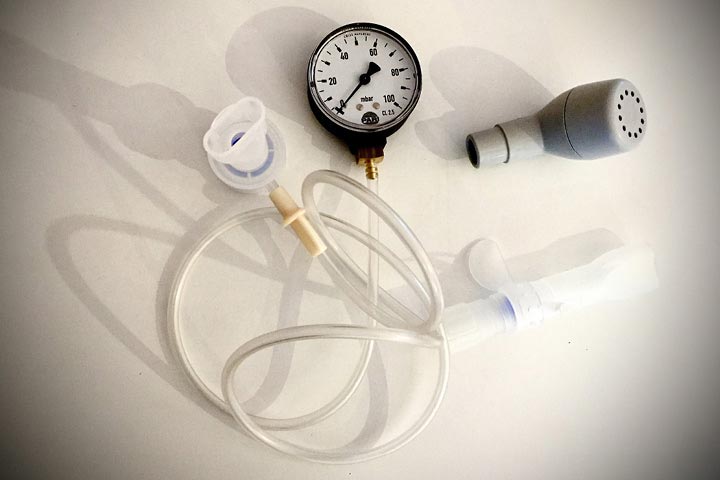
People talk about “smoker’s lungs” or a “smoker’s cough”. These somewhat harmless sounding terms belie the fact that COPD (chronic obstructive pulmonary disease) is a serious lung disease that progresses and ultimately leads to an early death. In addition to shortness of breath, typical symptoms include a cough and production of phlegm. Dr Beate Krenek, physiotherapist and respiratory therapist, sheds light on techniques that make breathing easier and special devices that can help.
Regular training with PEP devices reduces shortness of breath, trains the breathing muscles and makes clearing mucus easier. It is easiest to learn how to use these devices from respiratory therapists who specialises in them. They give patients comprehensive support as the learn how to do the breathing technique and how to use PEP devices.
For COPD patients, the issue of mucus and mobilising secretions is a major consideration. Dr Beate Krenek, MSc, is a physiotherapist and respiratory therapist and physician at Hietzing Hospital in Vienna. Dr Krenek: “Because of changes to lungs with the progressive disease COPD, it is important for patients to learn how to deal with secretions over the long term.”
The devices used for mobilising mucus are small hand-held devices prescribed by a doctor. Patients are trained to use them by a physiotherapist at the practice. Lastly, the physician will decide which device a patient will get.

Generally speaking, PEP devices are what is used. Dr Krenek: “They are particularly good for patients who have unstable airways – classically this is COPD patients. The more advanced the disease is, the more unstable the airways are.”
When patients exhale against a defined amount of resistance, their airways are stabilised by the PEP device for the length of the exhalation. They can exhale some of the trapped gas from hyperinflation because secretions are cleared. Without this, the airways collapse and the secretions remain in the lungs. Quality criteria for patients are easy handling and simple cleaning. The devices should be cleaned after every use.
There are two types of PEP devices: continuous and oscillating PEPs. The continuous devices stabilise the airways during exhalation for the entire length of the exhalation.
Dr Krenek: “The oscillating devices have a mechanism that repeatedly interrupts the exhalation, for example a steel ball. When patients have viscous parietal secretions, the PEP’s vibrations move the secretions from the surface of the airways and they can then be coughed up.”
Patients with wall instability and collapsing airways – like most COPD patients – usually do well with the continuous PEPs, with a wide variety of mouth pieces or masks. These devices also have the option of pressure control.
Oscillating PEPs do not have pressure control. Furthermore, oscillation in the airways can cause a mechanical irritation to the mucous membranes that is not always beneficial. In the event of an acute inflammatory process in the lungs or acute bleeding, the patient absolutely must see a specialist.
Dr Krenek: “You are actually safer with the continuous PEPs, provided the patient has understood that it is not about building up as much pressure as possible. This is not a training device. The goal is to keep the airways open, to stabilise them.” PEP devices should not be used if the patient has a history of untreated pneumothorax or coughing up a lot of blood. Oscillating PEPs should be used if patients have very viscous secretions.
It is also important that the physiotherapist or doctor ensures that the patient is using the device properly once a year.

Tip: PARI PEP SYSTEMS
The effective method of clearing mucus that is firmly lodged in the bronchial tubes.
Note: The statements made in the report are the individual view of the person reporting. They do not necessarily reflect the PARI view or the general state of science.
An article written by the PARI BLOG editorial team.
© 2025 PARI GmbH Spezialisten für effektive Inhalation